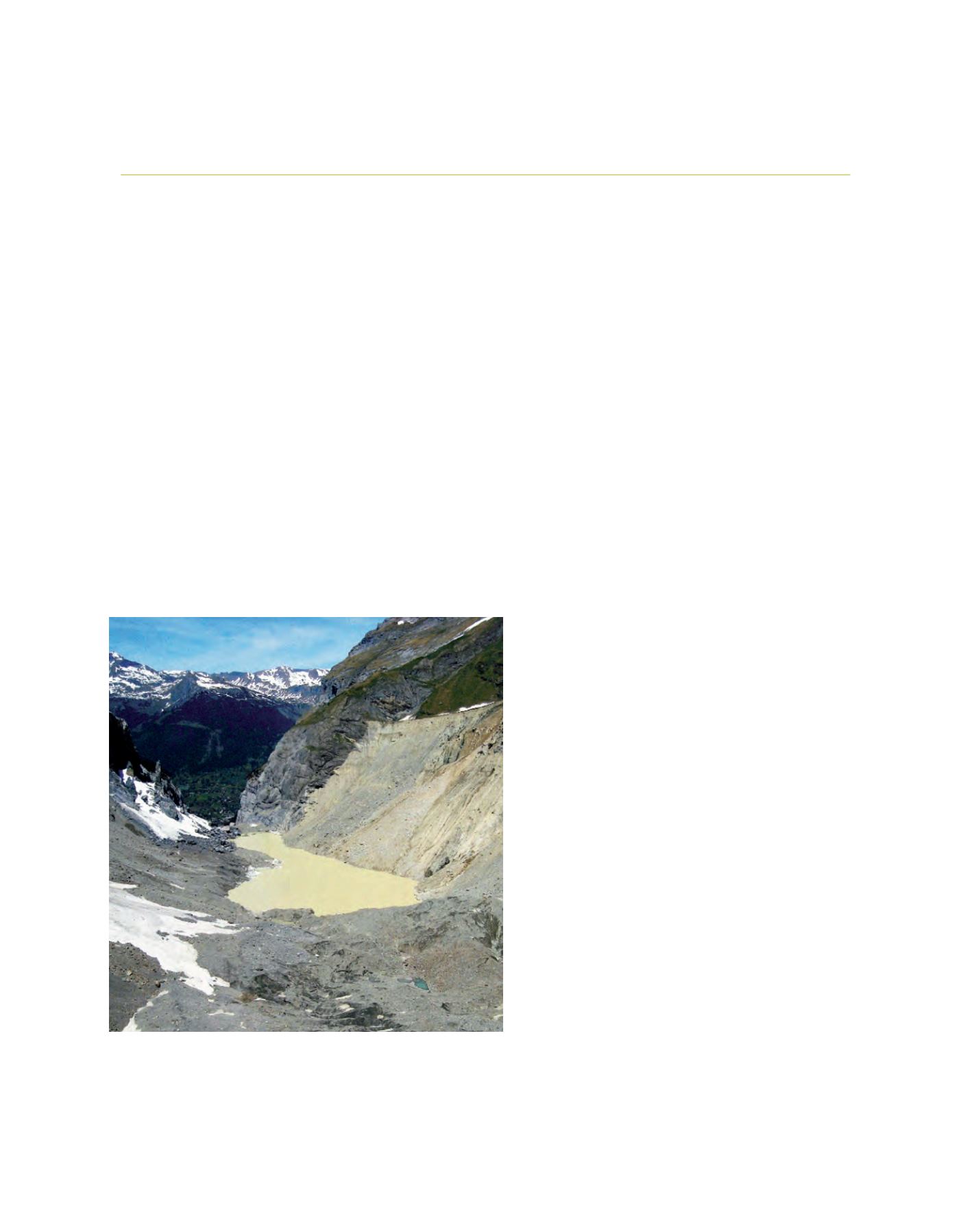

[
] 230
Adaptation to climate change in Switzerland
Roland Hohmann, Swiss Federal Office for the Environment (Climate Unit)
T
he fourth assessment report of the Intergovernmental Panel
on Climate Change established that despite all efforts to
reduce global greenhouse gas emissions, climate change is
affecting the development and welfare of human society all over
the world.
1
Vulnerability to climate change is particularly high
in developing countries situated in the southern hemisphere, but
countries in the northern hemisphere are also likely to be affected
eventually. In Europe, the Alpine region is considered one of the
most vulnerable to climate change, and thus efforts to adapt to
changing conditions in this area must be intensified.
The expected impacts of climate change in Switzerland up to the year
2050 were discussed in a comprehensive analysis published in 2007,
which in turn was based on a regional climate scenario.
2
The report
predicts a warming of approximately 2°C (with a range of uncertainty
between 0.9 and 3.4°C) for autumn, winter and spring, as well as a
rise of just under 3.0°C for the summer period (range of
uncertainty: 1.4 to 4.9°C). Assuming this level of warming,
the 0°C-isotherm will rise during winter by about 360
metres (range of uncertainty: 180 metres to 680 metres).
Precipitation will increase by about 10 per cent (range of
uncertainty: -1 per cent to +26 per cent) in winter and
decrease by about 20 per cent (range of uncertainty: -36
per cent to -6 per cent) in summer. Heavy precipitation
events are expected to increase in all seasons. In summer,
heat waves will become more frequent and severe. In
contrast, cold spells will decrease during winter.
Changes in extreme events, as well as gradual changes
of mean temperature and precipitation, will affect
natural and anthropogenic systems. Probably the most
obvious climate impact in Switzerland is the retreat of
alpine glaciers. In the European Alps the average loss
in overall glacier volume between the end of the ‘Little
Ice Age’ of 1850 and 1975 was about 0.5 per cent per
year.
3
This increased to about 1 per cent per year for
the remaining volume between 1975 and 2000, and
has accelerated to about 2-3 per cent per year since the
turn of the millennium. According to model calcula-
tions, an additional 75 per cent of the glacier surface
area in Switzerland will be lost by 2050 – in contrast
with 1971-90 – implying that smaller glaciers at lower
altitudes are likely to disappear.
Impacts on the hydrological cycle and natural hazards
Switzerland’s hydrological cycle will also be affected by
changing temperatures and precipitation. In particular, the
maximum river discharge will occur earlier in the year and
will be less pronounced. The combined effects of increased
precipitation and the 0°C-isotherm being located at higher
elevations will cause more rainfall to run off instantane-
ously, instead of being temporarily stored as snow. As a
consequence, the risk of winter flooding is likely to increase,
particularly in large catchment areas in the lowlands
surrounding the Alps. On the other hand, drier summers
will lead to more frequent and severe droughts. With hot
and dry summers becomingmore common bymid-century,
the combination of reduced precipitation, earlier snowmelt
and strongly reduced meltwater from vanishing glaciers
could lower runoff to critical levels, even in large Alpine
rivers. Thus, despite the large water resources in the Alpine
region, water stress could become a problem in some parts
of Switzerland during hot and dry summers, because of
the decreasing availability of river water and the increasing
demand for irrigation and freshwater supplies.
A
daptation
and
M
itigation
S
trategies
In 2006 a rockfall occurred below the fast retreating
Unterer Grindelwaldgletscher
in
the Bernese Alps due to decreased slope stability. The debris blocked the meltwater
runoff and a lake started to form. By summer 2009 the lake volume surpassed the
critical level above which the moraine threatens to break. As an adaptive measure,
a subsurface outflow is being constructed to drain the lake and to protect the
underlying villages from flooding
Image: Oberingenieurkreis I, Tiefbauamt des Kantons Bern
















